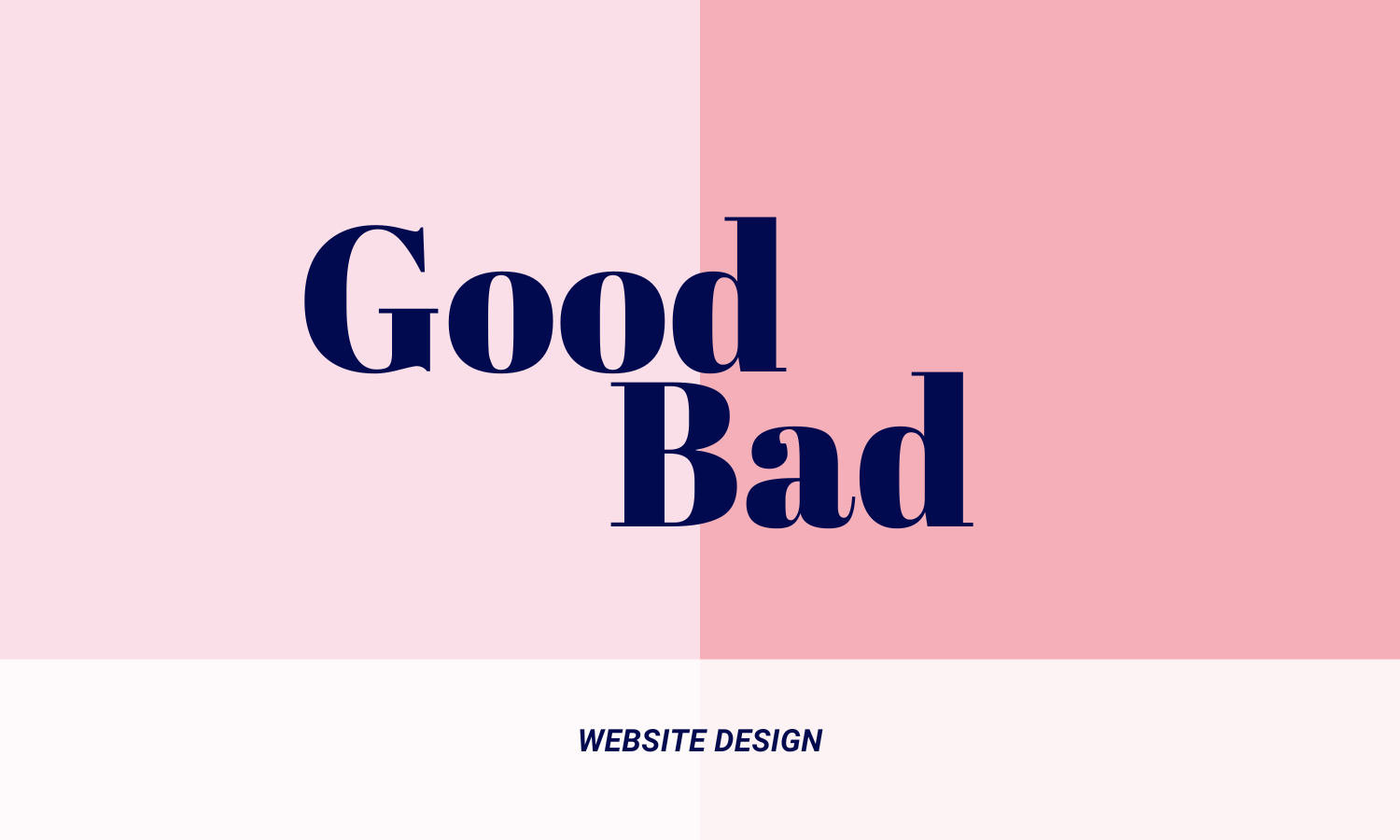Good Website vs. Bad Website: 10 Clear Differences
By khoanc, at: Oct. 31, 2025, 11:42 a.m.
Estimated Reading Time: __READING_TIME__ minutes


A website is one of the most important tools for any business. But here’s the truth: not all websites are created equal.
A good website attracts customers, builds trust, and drives sales.
A bad website frustrates visitors, hurts credibility, and silently drives people away even if your products or services are great.
Here are the 10 key differences between a good website and a bad one, along with tips to make sure your business is on the winning side.
1. Professional vs. Unprofessional Design
-
Good Website: Clean, modern, visually pleasing, and consistent with brand identity. Uses high-quality images, balanced colors, and clear typography.
-
Bad Website: Outdated, cluttered, inconsistent colors and fonts, pixelated images, or distracting design.
Fix: Stick to 2–3 brand colors, consistent fonts, and clean layouts. Tools like Canva AI or Colormind can help create modern design palettes.
2. Fast vs. Slow Loading Speed
-
Good Website: Loads in under 3 seconds, retaining visitors and ranking higher on Google.
-
Bad Website: Slow to load due to large images, poor hosting, or too many plugins. Visitors leave before the page appears.
Fix: Compress images with TinyPNG, use fast hosting, and limit unnecessary scripts. NitroPack or Cloudflare AI caching can automate speed optimization.
3. Mobile-Friendly vs. Non-Responsive
-
Good Website: Fully responsive, adapting smoothly to desktops, tablets, and smartphones.
-
Bad Website: Broken layouts on mobile, tiny fonts, buttons too small to tap. Alienates more than 70% of web users in Australia.
Fix: Use responsive templates and test on real devices. Try Google’s Mobile-Friendly Test or BrowserStack for previews.
4. Intuitive vs. Confusing Navigation
-
Good Website: Simple, logical menus. Users can find what they need in three clicks or less.
-
Bad Website: Overloaded menus, scattered links, and poor structure that frustrate visitors.
Fix: Organize content clearly. Use analytics and heatmaps (like Hotjar) to see where users get stuck.
5. Clear Purpose vs. No Direction
-
Good Website: Has a clear purpose and uses strong CTAs (“Get a Quote,” “Book Now,” “Shop Online”) to guide visitors.
-
Bad Website: No clear goals, vague text, or missing CTAs, leaving visitors unsure what to do next.
Fix: Place prominent CTAs on every key page. Tools like Copy.ai can generate persuasive button text.
6. Fresh Content vs. Stale Content
-
Good Website: Updated regularly with blogs, services, or news. Fresh content signals an active, trustworthy business.
-
Bad Website: Outdated blogs, old contact info, or irrelevant content that make the site look abandoned.
Fix: Commit to updating at least once a month. Use Jasper or Writesonic to generate blog ideas and content.
7. Built-in Credibility vs. Trust Gap
-
Good Website: Shows client testimonials, case studies, reviews, and certifications
-
Bad Website: No social proof, no references for making customers hesitate to trust you
Fix: Add testimonials, Google reviews, or case studies. Platforms like Trustpilot or Google Business Profile can be integrated for credibility.
8. Brand Consistency vs. Mixed Messages
-
Good Website: Consistent colors, fonts, and tone that reflect the brand’s identity.
-
Bad Website: Inconsistent styles, unprofessional graphics, or tone that doesn’t match the brand.
Fix: Create a simple brand style guide for fonts, colors, and tone. Apply it across all pages.
9. Accessible vs. Inaccessible
-
Good Website: Designed for everyone—including users with disabilities. Uses proper text contrast, alt text for images, and easy-to-read fonts.
-
Bad Website: Ignores accessibility, making it hard for some visitors to navigate or understand.
Fix: Use WAVE Accessibility Tool to test your site. Accessibility improves SEO too.
10. Secure vs. Vulnerable
-
Good Website: Uses HTTPS, secure payment gateways, and updated plugins to protect data.
-
Bad Website: Shows “Not Secure” warnings, outdated code, and risks both user trust and data safety.
Fix: Install SSL certificates, update plugins, and use tools like Sucuri for ongoing security monitoring.
Quick Comparison Table
| Category | Good Website | Bad Website |
|---|---|---|
| Design | Clean, professional, consistent | Cluttered, outdated, messy |
| Speed | Loads in under 3 seconds | Slow, users leave early |
| Mobile | Fully responsive | Broken on phones |
| Navigation | Simple, intuitive menus | Confusing, overloaded menus |
| Purpose | Clear CTAs and goals | No direction for users |
| Content | Fresh, updated, valuable | Stale, outdated, irrelevant |
| Credibility | Testimonials, reviews, proof | No trust signals |
| Brand | Consistent, professional identity | Mixed, unprofessional tone |
| Accessibility | Inclusive and usable by all | Difficult for some users |
| Security | HTTPS, secure, updated | Not secure, vulnerable |
Conclusion
A good website isn’t just about looks, it’s about function, trust, and results. From fast speed to strong SEO, from mobile responsiveness to credibility, good websites consistently work for the business.
A bad website, on the other hand, silently drives customers away every single day.
At Glinteco, we specialize in turning bad websites into professional, conversion-focused platforms that help Australian SMEs grow and thrive.
Don’t let your website be the reason customers leave. Let’s build one that drives success.




